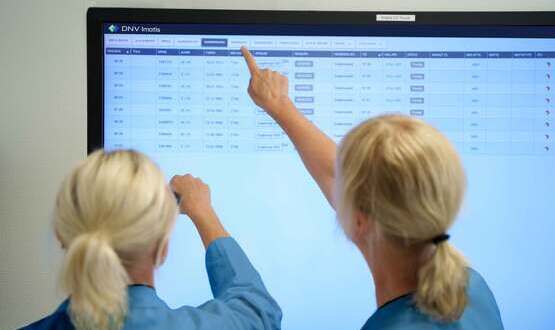Enter the CCG: on Patient Online
- 28 April 2016

Here’s a puzzle for you. A car is on a two mile journey. The driver completes the first mile at an average speed of 30 mph. How quickly must he take the second mile in order to average 60 mph for the entire journey?
90 mph? Most people would guess that to start with, but it’s wrong.
120 mph? Wrong again.
In fact, it can’t be done. You don’t believe me? Here’s the calculation. To travel two miles at an average of 60 mph requires a total journey time of two minutes.
But the car has already spent two minutes travelling the first mile at 30 mph. Therefore, it has to complete the next mile instantaneously in order to achieve an average speed of 60 mph – and that’s impossible.
This story has a point – or, to be precise, two of them.
The first is obvious: take extra care when working out averages! (“You can’t average averages.”)
The second is more subtle: there are many occasions when the ‘obvious’, ‘intuitive’ answer to a problem is totally wrong, when only by the careful application of data, knowledge and logic does the truth becomes apparent.
Patient Online
This has just become all too relevant for the GPs in our clinical commissioning group; indeed, for every practice in England. The problem is Patient Online, the government’s scheme to allow individual patients to interact electronically with their surgery’s computer.
There are two parts to Patient Online: the interactive aspect, which allows patients to order repeat prescriptions and make or change appointments online.
So far, so good: this should improve communications between patient and practice, and streamline work for the practice staff.
However, the other part of Patient Online is about enabling patients to view their own electronic GP record.
Initially, GPs have to offer access at the level of the ‘detailed coded record’ (the rubric of all coded entries within the electronic record). But the government’s intentions, ultimately, will require practices to allow patient access to their full record, including all free text, letters and documents.
Patients wanting to view their records can apply to do so: this may assist in their self-management of long-term conditions. Allowing patients to see their records is also intended to create greater openness.
The government is promoting Patient Online hard, because it thinks this is what patients want. Strong pressure is being applied to CCGs and practices to get patients registered for Patient Online as soon as possible.
What a wonderful idea! So easy! So much like calculating the average speed of a car…
And now for the downside
Patients have to be individually registered for Patient Online services. In each case the practice has to do some checking. Are they who they say they are? Are they competent to consent for Patient Online services? Are there safeguarding risks? Are they being coerced into making their records available?
But that’s not the biggest problem. Before any patient can be allowed to view their record the practice has to check that it contains nothing that might cause problems.
That means: no inappropriate references to third parties; no unanticipated diagnoses which might cause distress, such as a family history of Huntington’s chorea.
In addition, will anything in the record put staff at risk because the patient is likely to become upset by what they have written, however accurate — especially in relation to psychiatric illnesses and addictions?
The percentage of patients to whom these considerations may apply is small — but the consequences of not spotting these problems (or of not taking appropriate action) can be huge.
All healthcare organisations now agree that before any individual patient’s record is viewable online it should be checked thoroughly for entries such as the above, with consideration given to the need to redact parts of the record from the patient’s view.
This is a sensible and ethical approach. But it will take time.
Time – lots of it
This isn’t so bad if the practice has chosen only to show the detailed coded record (not free text or letters) because there will not be that much to check.
However, things are different when it comes to the full record. The average GP record now has many letters attached (often of three or more pages each). So every practice would have a huge job on its hands to check that each record is safe for detailed viewing — and all future entries will also have to be rigorously checked for the same things at the time they are made.
Indeed, my calculations suggest that to put the full records of 10% of the average practice list online each year would require the full-time work of a member of staff for two months each year for the next ten years.
(Say: 7,000 patients per practice, so 700 records have to go on-line each year. Allowing half an hour to check each record, that’s 16 patients a day, or 80 per week: a total of 8.75 weeks in all.)
More downside
But there’s another problem. Opening up the records to being viewed will inevitably lead patients to question their contents.
In some cases, they will query investigation results that are just outside normal values; or seek further information; or want to add to the notes or correct them — or even dispute them and request amendments. Practices will need to dedicate further time to this.
Now let me remind you — if you didn’t already know — that primary care in the NHS is teetering on the edge of total collapse.
Many of my full-time colleagues work 12-14 hours a day, so they can’t absorb extra work. Net practice remuneration is shrinking, which means we have no money to buy in more staff. And locums are getting ever harder to find.
In other words, far from being a simple, benign event with no significant consequences, Patient Online could easily become the straw that breaks the camel’s back, especially if the government decides to insist upon full record access, as opposed to the access to the detailed coded record that we have at the moment.
Fortunately NHS England has begun to acknowledge the logistical problems Patient Online presents, and now accepts that it is reasonable for practices to limit the uptake and checking of records for access to a rate they can manage, depending on their resources.
I’ve already alerted my CCG about all this, strongly encouraging them not to push Patient Online targets too forcefully. I’ve provided our local practices with detailed advice on how to implement the whole process successfully and safely — in particular reminding them of the dangers of not checking patient records properly before making them available online.
Patient Online is a potential nightmare for practices; yet on the surface, it sounds so innocent, doesn’t it? A bit like the average speed of a car, wouldn’t you say?
|
Dr John Lockley
|
|||||||






